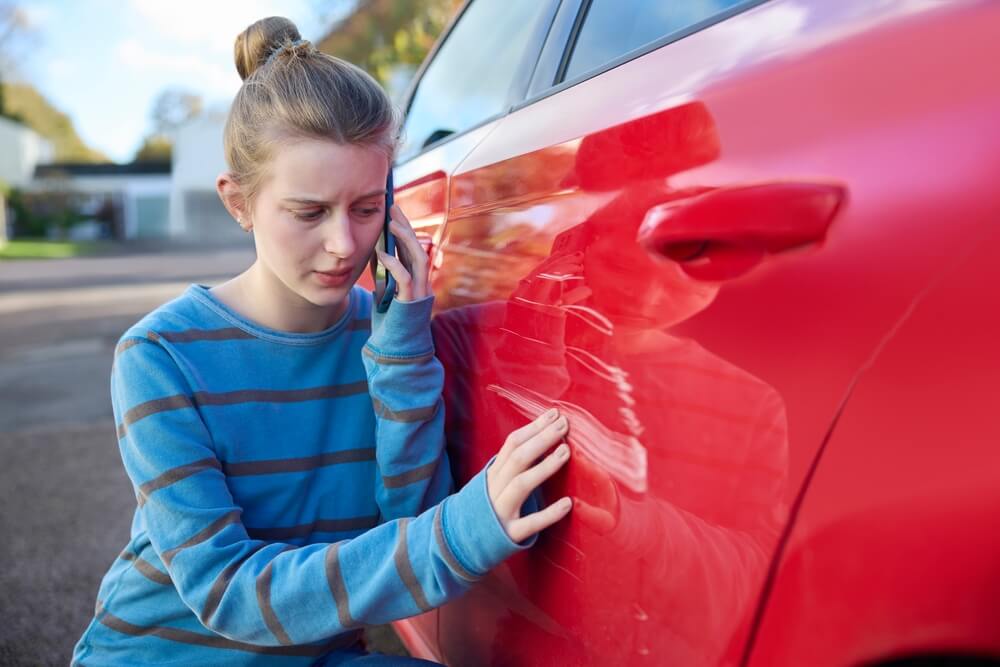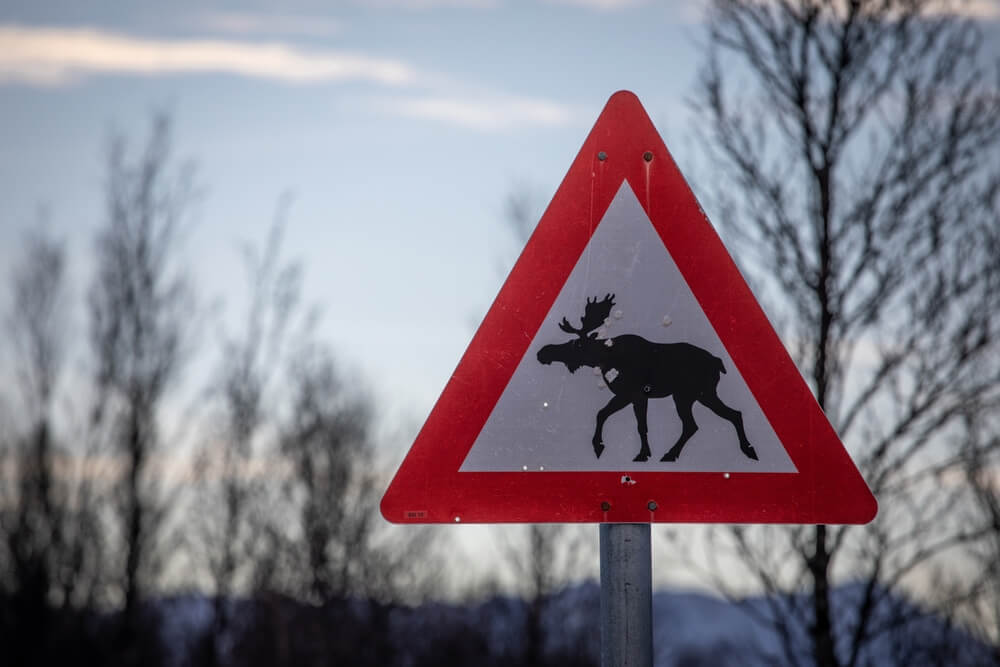
If you are not redirected within 30 seconds, please click here to continue.
Samedi: 10h – 16h HAE

If you are not redirected within 30 seconds, please click here to continue.
If you are not redirected within 30 seconds, please click here to continue.
What is the mandatory minimum car insurance you need to have in Canada?

Table of Contents
Auto insurance is legally required of all drivers across Canada, no matter where you're driving. This mandatory coverage ensures everyone on the road is financially protected if something goes wrong.
Whether it’s a fender bender or something more serious, auto insurance makes certain that drivers, passengers and even pedestrians can get the help they need for repairs, medical bills and other costs without being stuck with massive out-of-pocket expenses.
However, each province has slightly different regulations and practices surrounding auto insurance – whether you’re driving into Canada for the first time or crossing provincial borders on a road trip or to move, you should be aware of how much insurance is legally required of you.
Public vs. private auto insurance in Canada
How you buy auto insurance in Canada depends on where you live or rent your vehicle. Some provinces have publicly regulated car insurance, but most operate on private insurance.
- In British Columbia, Manitoba, and Saskatchewan, you must buy coverage from public insurance providers. That means the provincial government runs the system, sets the rules and determines the pricing. You can still purchase optional extra coverage through private companies.
- In provinces like Ontario, Alberta, Nova Scotia, and most others, insurance is sold through private companies. This means you can compare prices and coverage levels from different providers to find a policy that works for you.
What’s the difference between no-fault and tort systems?
Canada has two primary systems for handling auto insurance claims: Tort and no-fault auto insurance.
In no-fault provinces like Ontario and Quebec, you go through your own insurer for medical expenses and vehicle damage, regardless of who caused the collision. This speeds up the claims process and helps reduce legal disputes.
In tort systems like Alberta, the at-fault driver (and their insurer) is responsible for damages. This can lead to legal action if the injured party sues for things like lost wages or pain and suffering.
Related: At-fault accident rules: 10 common accidents and who is at fault
Key components of auto insurance coverage
Most Canadian car insurance policies include the following types of coverage:>
- Third-party liability: This covers you if you’re responsible for injuring someone or damaging their property. Most provinces require at least $200,000 in coverage, though higher limits – say, around $1 million or more.
- Accident benefits: This pays for medical care, rehabilitation and income replacement if you’re hurt in a crash, no matter who’s at fault.
- Uninsured automobile coverage: This protects you if you're involved in an accident with an uninsured or unidentified (hit-and-run) driver.
- Direct compensation property damage (DCPD): In certain provinces like Alberta and New Brunswick, your own insurance covers your vehicle damage if you weren’t at fault. This makes claims faster and easier to solve. Note that Ontario, which once had mandatory DCPD, has recently made this piece of insurance optional.
Mandatory minimum insurance coverage by province
Here’s a breakdown of required auto insurance coverage in each province and territory, along with where to purchase it:
Alberta
- Mandatory coverage: Third-party liability, accident benefits, and DCPD
- Minimum liability limit: $200,000
- Where to buy: Private insurers.
British Columbia
- Mandatory coverage: Basic Autoplan includes third-party liability, accident benefits, underinsured motorist protection, and inverse liability
- Minimum liability limit: $200,000
- Where to buy: Public insurer (ICBC) for basic coverage; optional coverages available through private insurers.
Manitoba
- Mandatory coverage: Basic Autopac includes third-party liability, personal injury protection, and all-perils coverage
Minimum liability limit: $200,000 - Where to buy: Public insurer (Manitoba Public Insurance) for basic coverage; optional coverages available through private insurers.
New Brunswick
- Mandatory coverage: Third-party liability, accident benefits, uninsured automobile coverage, and DCPD
- Minimum liability limit: $200,000
- Where to buy: Private insurers.
Newfoundland and Labrador
- Mandatory coverage: Third-party liability and uninsured automobile coverage
Minimum liability limit: $200,000 - Where to buy: Private insurers.
Northwest Territories
- Mandatory coverage: Third-party liability and accident benefits
- Minimum liability limit: $200,000
- Where to buy: Private insurers.
Nova Scotia
- Mandatory coverage: Third-party liability, accident benefits, uninsured automobile coverage, and DCPD
- Minimum liability limit: $500,000
- Where to buy: Private insurers.
Nunavut
- Mandatory coverage: Third-party liability and accident benefits
- Minimum liability limit: $200,000
- Where to buy: Private insurers.
Ontario
- Mandatory coverage: Third-party liability, accident benefits, uninsured automobile coverage, and DCPD
- Minimum liability limit: $200,000
- Where to buy: Private insurers.
Prince Edward Island
- Mandatory coverage: Third-party liability, accident benefits, uninsured automobile coverage, and DCPD
Minimum liability limit: $200,000 - Where to buy: Private insurers.
Québec
- Mandatory coverage: Bodily injury coverage provided by the public insurer (SAAQ); property damage coverage through private insurers
- Minimum Liability Limit: $50,000 for property damage
- Where to buy: Public insurer (SAAQ) for bodily injury; private insurers for property damage.
Saskatchewan
- Mandatory coverage: Basic package includes third-party liability, accident benefits, and uninsured automobile coverage
- Minimum liability limit: $200,000
- Where to buy: Public insurer (Saskatchewan Government Insurance) for basic coverage; optional coverages available through private insurers.
Yukon
- Mandatory coverage: Third-party liability and accident benefits>
- Minimum liability limit: $200,000
- Where to buy: Private insurers.
What if you’re in an accident in another province?
If you have auto insurance (and, as established, if you’re a Canadian driver, you almost certainly do), your existing insurance protects you beyond your provincial borders.
“An auto insurance policy from any province or territory is valid throughout Canada and the U.S., so you're covered if you’re involved in an accident away from home,” says Anne Marie Thomas, Director of Consumer and Industry Relations at the Insurance Bureau of Canada (IBC).
However, the claims process may follow the rules of the province where the accident occurred (e.g. no-fault vs. tort). Always check with your insurer or broker before traveling to understand any differences in coverage and procedures, especially if the province you’re traveling to has a higher minimum liability limit than you currently have. You should also be aware of your coverage limitations in general.
“If you have $1 million in liability coverage and someone sues you for $5 million, then you have to come up with the difference on your own,” Thomas adds. “Your insurance policy is not going to pay out any more than you purchased.”
U.S. Drivers in Canada: What you should know
Most U.S. auto insurance policies are valid in Canada due to reciprocal agreements. However, U.S. liability limits are often lower than Canadian requirements, so it’s a good idea to get extra coverage to bridge any gaps, according to Thomas.
While driving in Canada, make sure you carry proof of insurance, vehicle registration, and a valid driver's license at all times. Some provinces may require a Non-Resident Inter-Province Motor Vehicle Liability Card (commonly known as a "yellow card") as proof of adequate coverage.
Renting a vehicle in another province
When you rent a car in Canada, the rental company is responsible for providing the minimum required third-party liability coverage. They will then typically offer additional coverage called a Loss Damage Waiver or Collision Damage Waiver for damage to the rental vehicle itself. You may not need to buy this coverage if your personal auto policy has an endorsement (e.g. OPCF 27 in Ontario and SEF 27 in Alberta) that extends your liability and physical damage coverage to non-owned vehicles, such as rentals.
If you use a credit card that offers rental car insurance, it typically covers collision damage and theft, but not third-party liability or accident benefits. Before hitting the road, review your credit card policy and consider purchasing additional coverage if necessary.
“Always be careful about reviewing the terms and conditions of insurance offered via credit card companies,” says Thomas. “Often, there’s a limit to how much the insurance will cover. For example, the contract might say something like: ‘We will not pay any more than $30,000.’ If you rent a Lamborghini and total it in a crash, $30,000 is not going to make a dent on the damages. In some cases, you might want to purchase that additional coverage from the rental company.”
Consult with an insurance provider
Understanding car insurance in Canada is key to staying protected and legal on the road. Whether you're a resident or a visitor, make sure you have the right coverage, familiarize yourself with the local rules, and check with your insurer or broker about out-of-province or international travel.
Read next: How to buy a car out of province
Don't waste time calling around for auto insurance
Use RATESDOTCA to shop around, and compare multiple quotes at the same time.
Get money-saving tips in your inbox.
Stay on top of personal finance tips from our money experts!









